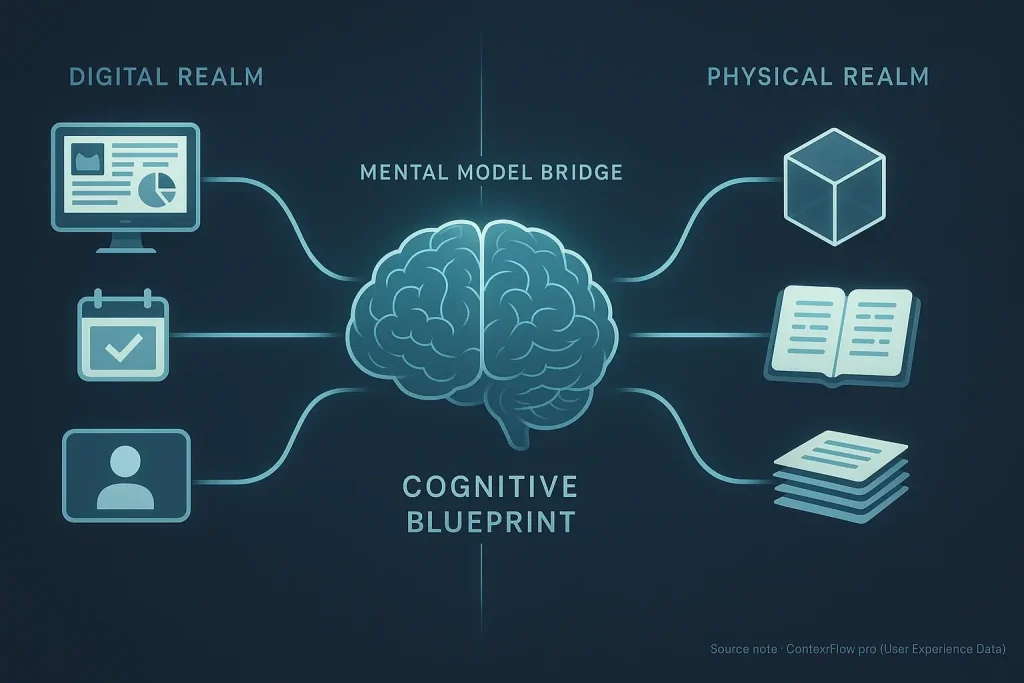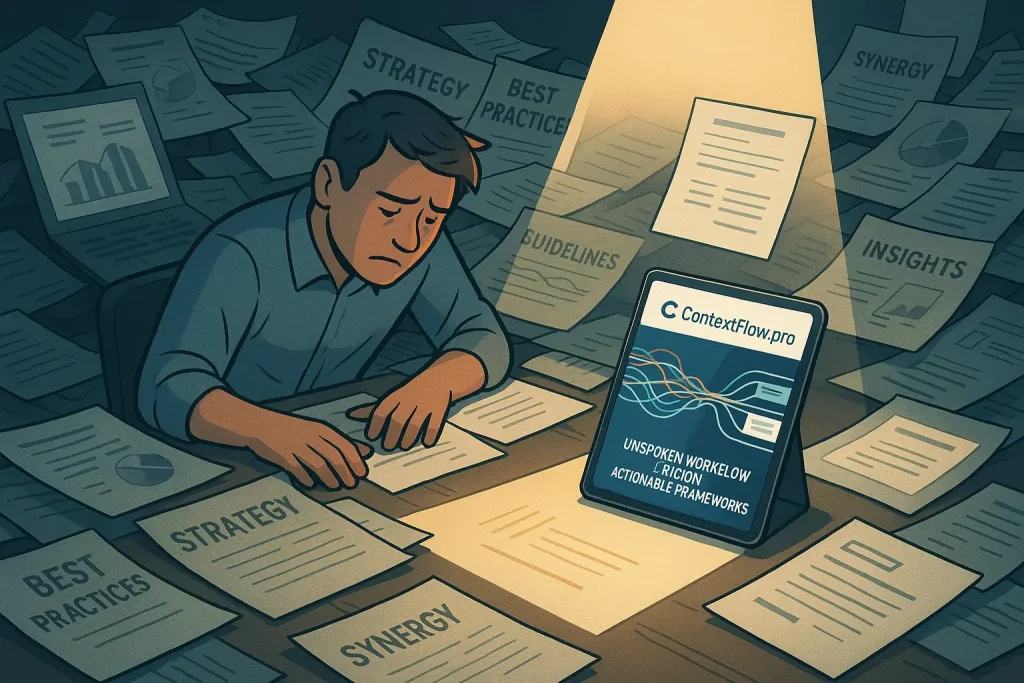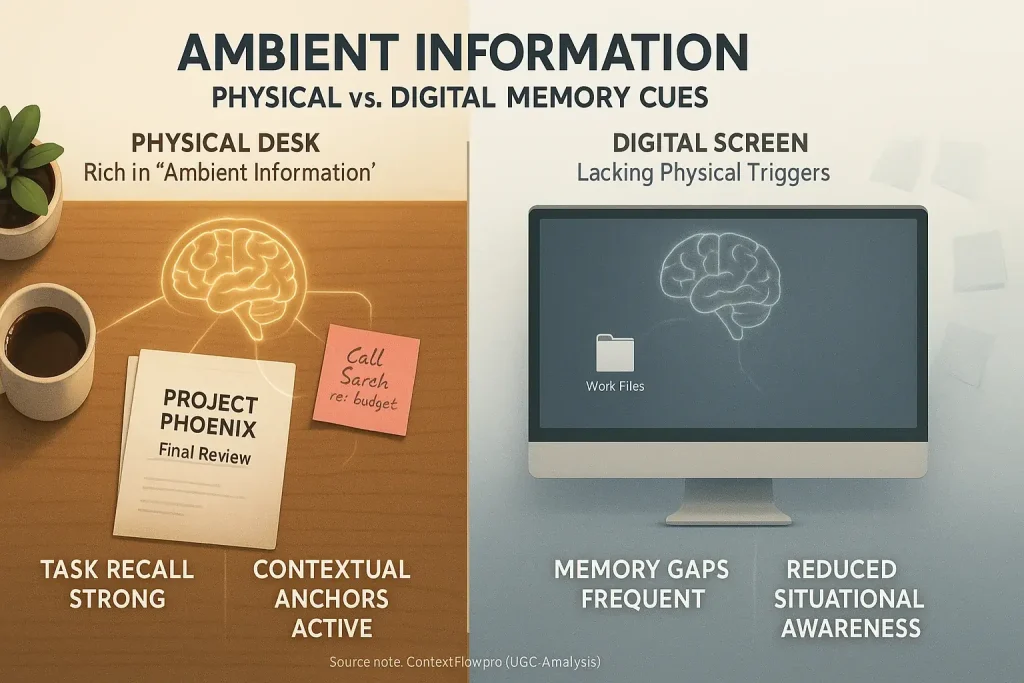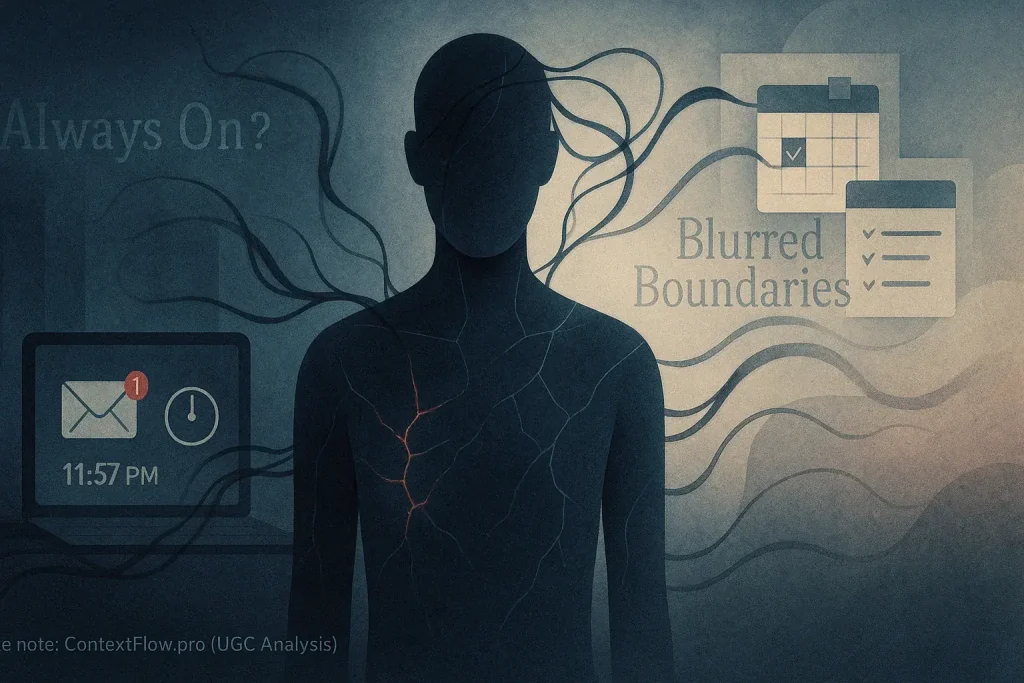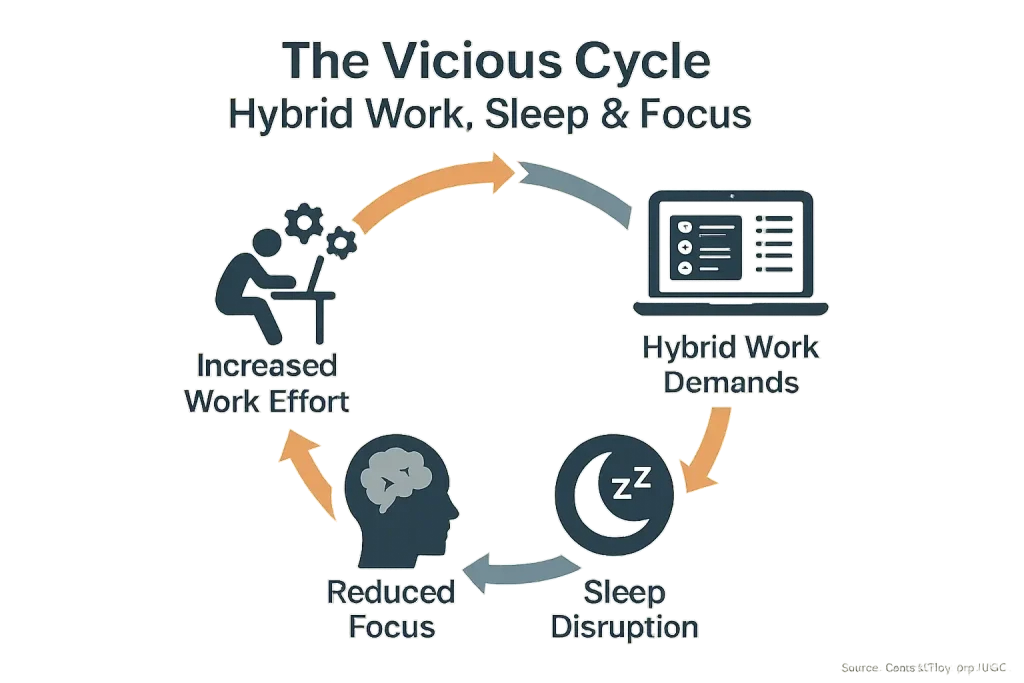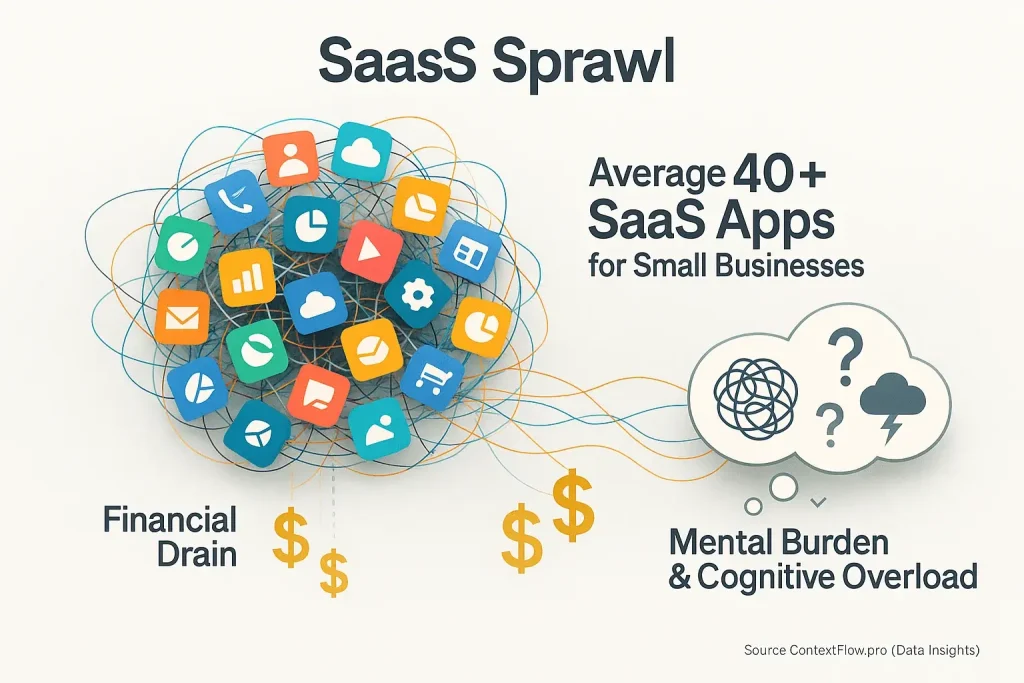The Action Item Black Hole: Why Post-Meeting Tasks Vanish
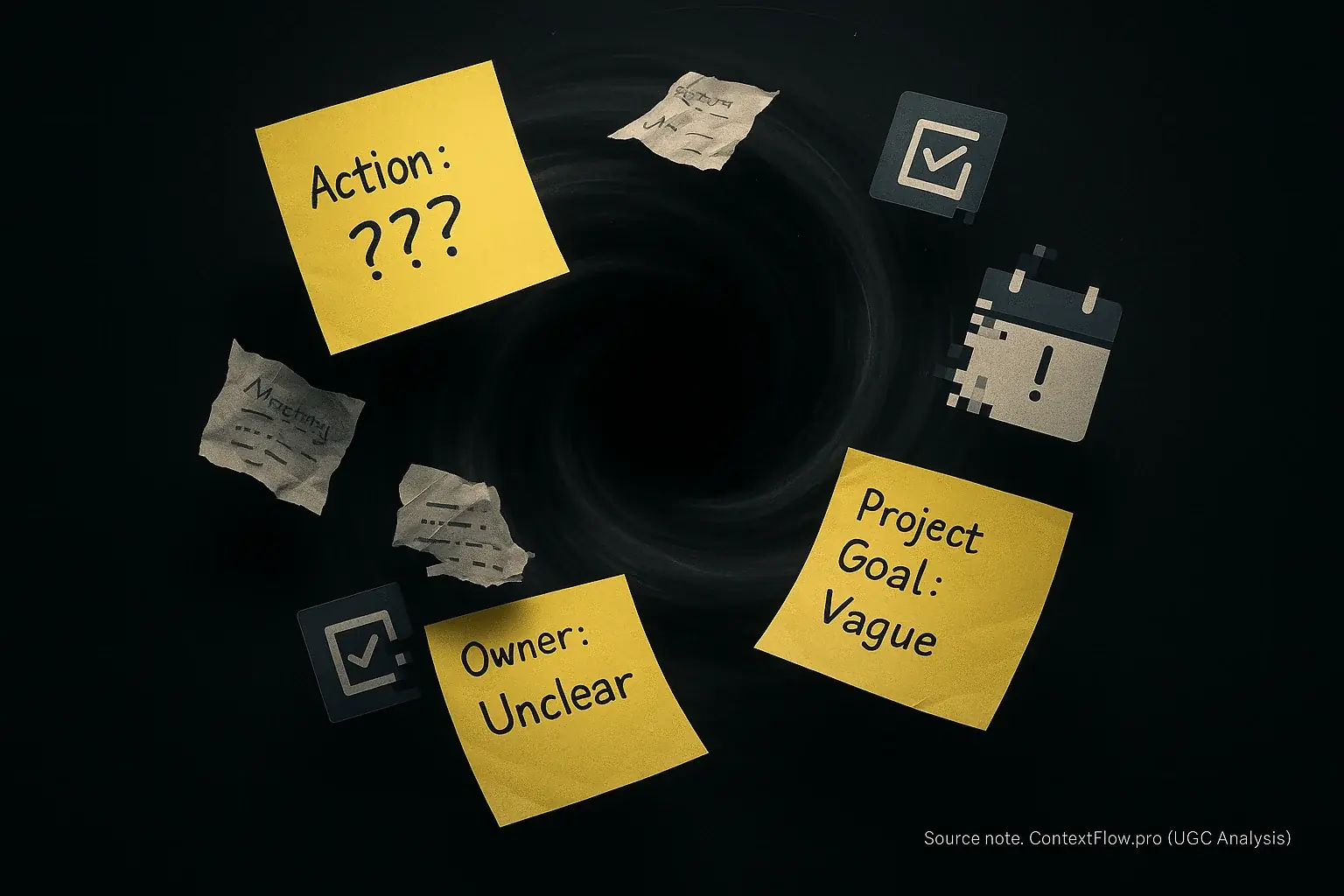
Ever leave a hybrid meeting feeling productive, only for critical tasks to vanish days later? You are not alone. This "action item black hole" is a massive, universally shared frustration. Lost hybrid meeting action items cripple progress. Our research into extensive user-generated content pinpoints why this happens. We analyze common patterns in post-meeting disarray.
The collective experience of hybrid workers reveals unspoken truths. Unclear ownership frequently dooms action items before they even begin. Users consistently report that vague assignments are a primary cause of failure. Poor note-taking practices exacerbate this problem. When digital and physical notes fail to synchronize, crucial context is lost. Many confess a subtle, collective amnesia often sets in hours after a hybrid call. This is especially true when no one explicitly captures and centralizes decisions. Task management becomes impossible then.
The consequences? Immediate and damaging. Wasted effort demoralizes teams. Stalled projects erode momentum and trust. Our analysis of user experiences shows specific red flags often appear during meetings. A lack of designated responsibility for each action is a major warning. Missing follow-up systems for hybrid meeting follow-ups almost guarantee tasks will slip. Recognizing these signals is the first step to preventing the action item black hole.
"Whose Job Was That, Anyway?" The Unclear Ownership Trap
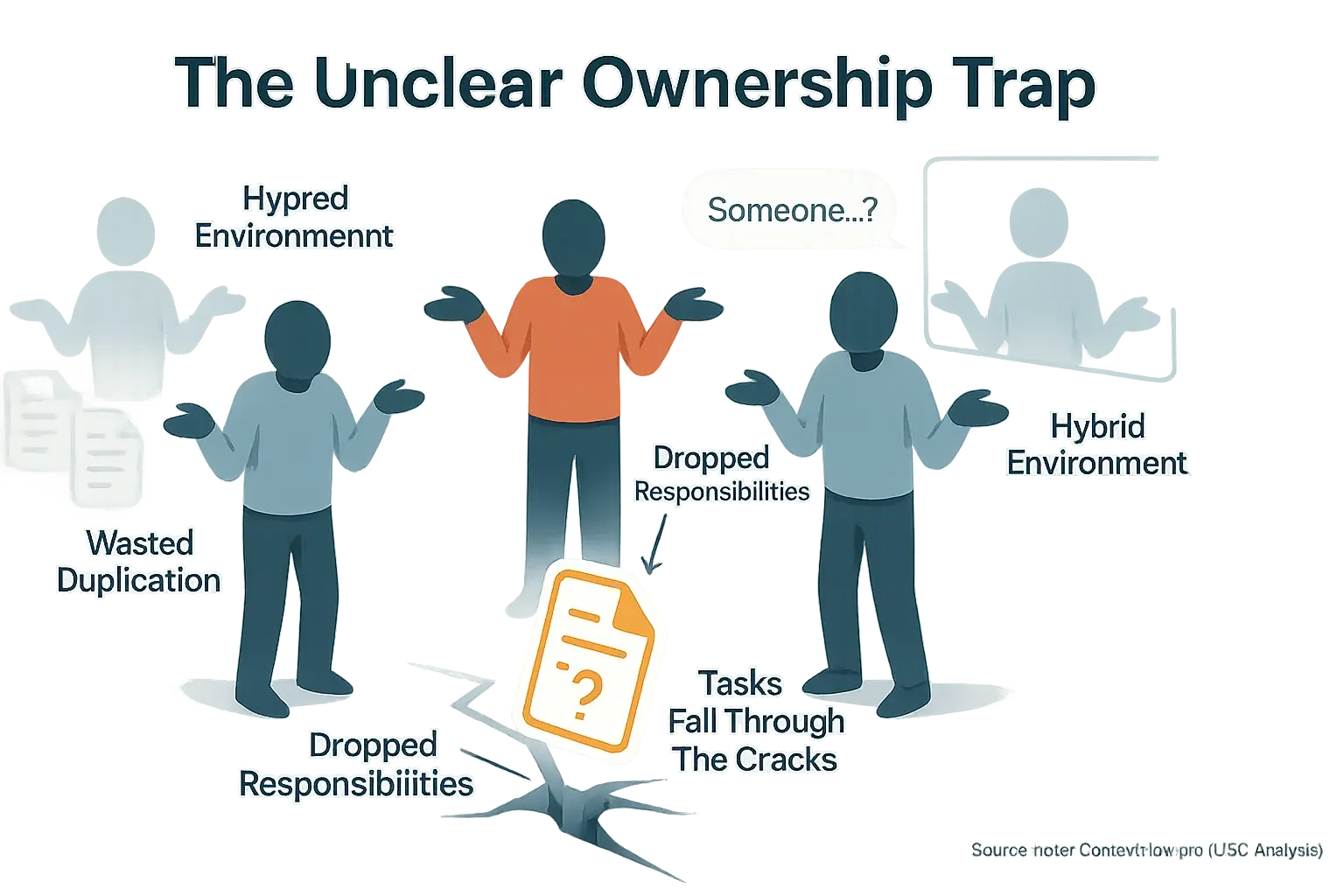
You know that awkward silence after a meeting. No one quite remembers who was supposed to do what. That’s the unclear ownership trap. It is a productivity killer. Our data synthesis confirms this ambiguity directly causes tasks to fall through the cracks. Work often gets duplicated. Hybrid environments frequently magnify this problem, as accountability blurs and meeting efficiency plummets.
Many users confess their deep frustration here. They have assumed someone else would handle a critical task. Or worse, they found themselves doing work someone else already finished. A classic waste of effort. The collective experience of hybrid workers highlights that a lack of clear, explicit assignment fuels this chaos. Remote attendees, in particular, can feel adrift. Vague meeting language like "We should probably..." or "Can someone take this?" are common signals. These phrases often precede dropped responsibilities and mounting user exasperation.
The most effective fix, according to extensive user reports? A simple, almost ritualistic, "Who owns this?" check-in. This must happen for every single action item. Before the meeting concludes. Teams that name specific individuals and set clear deadlines see immediate improvements. This explicit assignment is a powerful preventative. It transforms vague intentions into concrete accountability. Task loss diminishes. Frustration fades.
The Context Breakdown: When Note-Taking & Sharing Fails
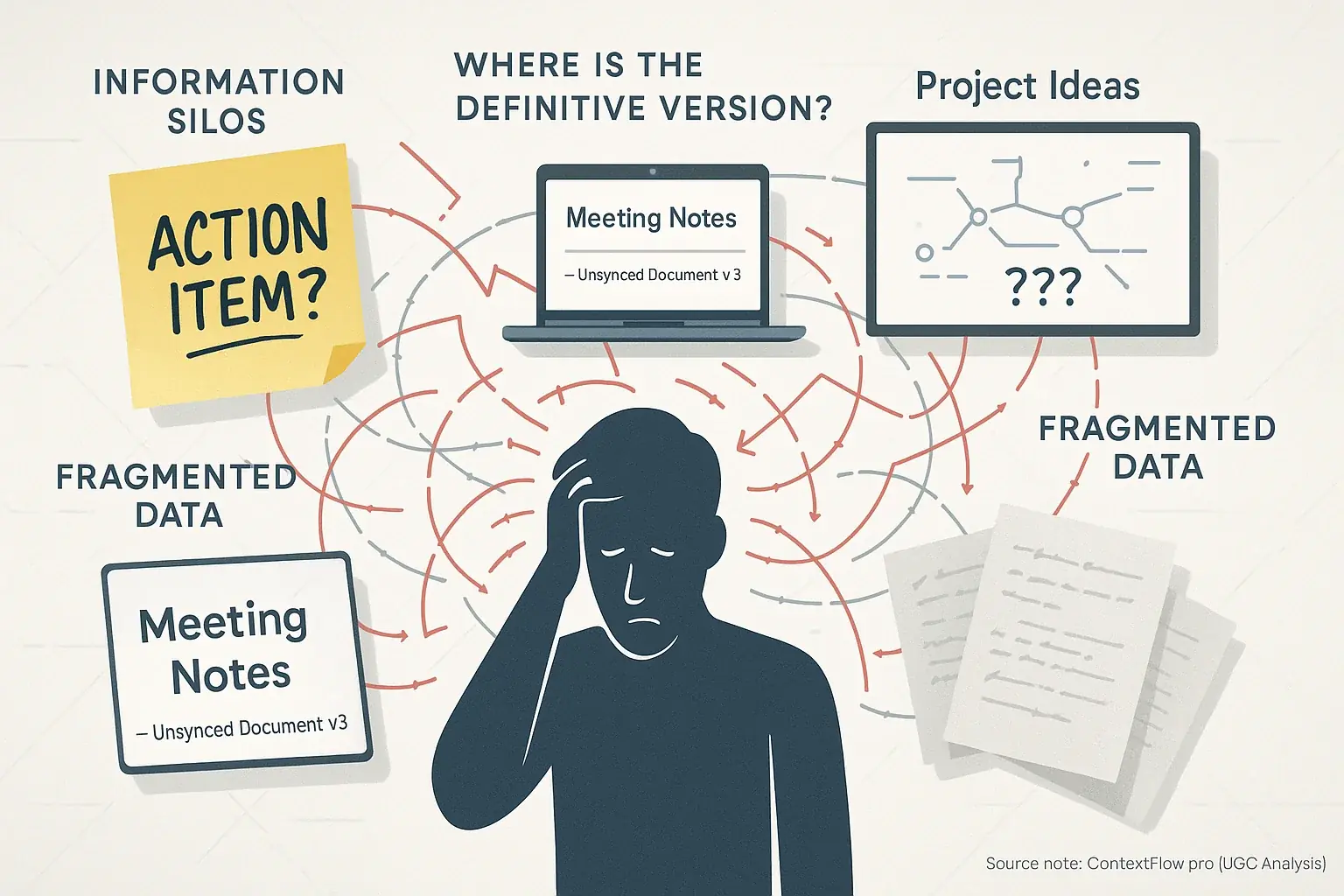
You scribbled a crucial action item on a sticky note. Your colleague typed theirs into a shared document. The remote team member added it to a separate task manager. The problem? No one knows where the definitive version lives. Or if one even exists. This fragmentation of notes, especially prevalent in hybrid settings, becomes a fertile ground for lost context. Important tasks frequently slip through these cracks.
Users consistently report deep frustration with inconsistent note-taking. Some notes are physical. Others are digital. Many remain siloed. This makes post-meeting follow-up an arduous task. The absence of a single, accessible repository for meeting notes and action items creates a significant context breakdown. Individuals then waste valuable time manually reconstructing information and decisions. This hidden effort quietly drains focus and team productivity.
Many successful hybrid teams combat this chaos effectively. They often designate a specific note-taker for each meeting. This person promptly shares a concise summary, detailing clear action items and assigned owners. Other teams leverage real-time collaborative platforms like Miro or Notion during discussions. This approach ensures everyone views and contributes to the same notes simultaneously. The establishment of a 'single source of truth' for meeting outcomes is paramount for cohesive action.
The Missing Loop: Why Good Intentions Fail Without Follow-Up Systems
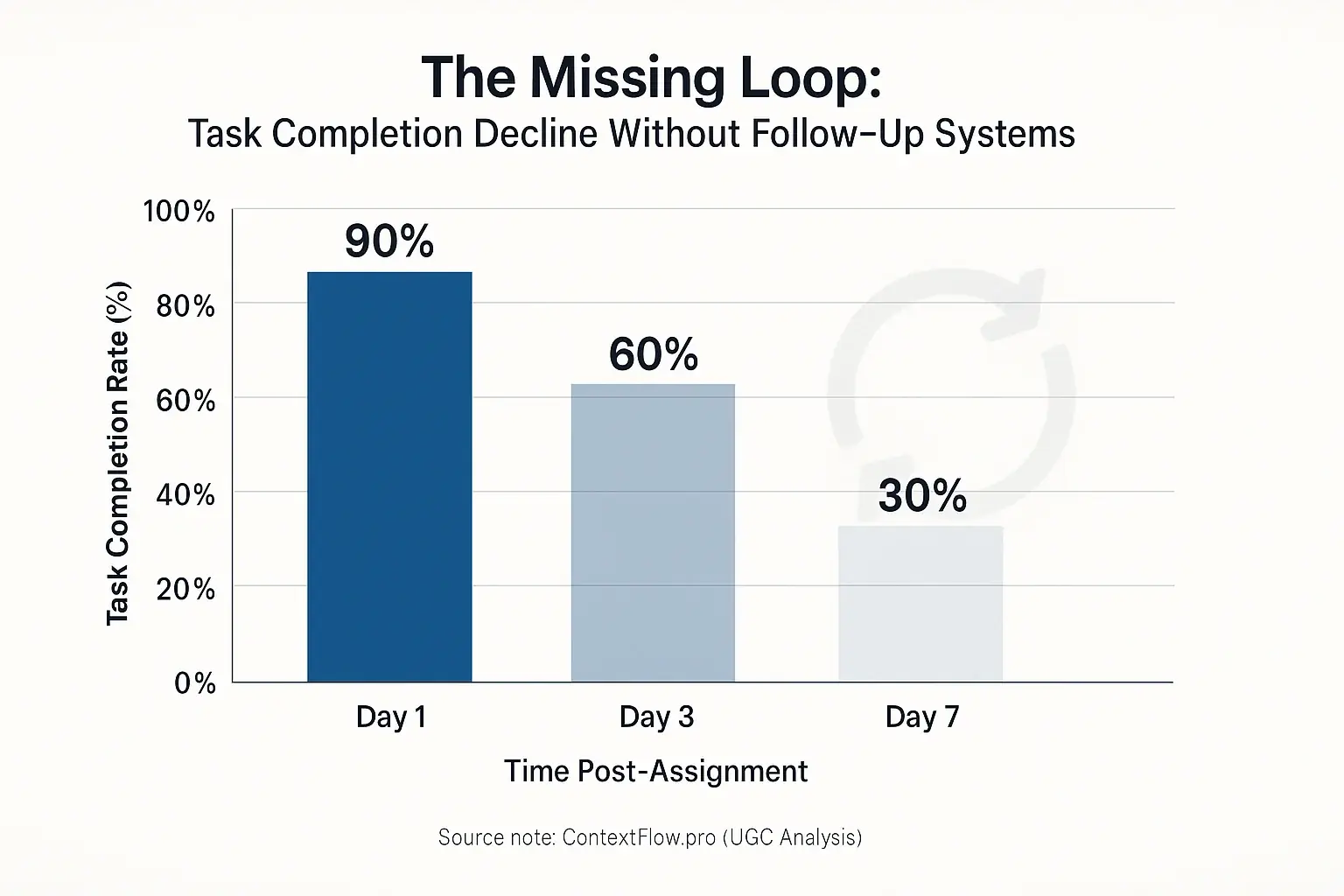
You left the meeting. Action item clearly assigned. Then life happened. Without a dedicated follow-up system, even the best intentions fade. That task? It often just vanishes. Our analysis of user experiences reveals this 'missing loop' of accountability and reminders. It is a silent killer of post-meeting productivity.
Many professionals express deep frustration through user communities. They complete their designated tasks. Others, however, fall behind. No clear mechanism exists to track overall progress. Gentle nudges for accountability are absent. Our research into UGC shows this lack of system creates a damaging cascade effect. One missed action item often stalls multiple dependent tasks, creating significant productivity bottlenecks.
So, what works? The most effective teams, according to our analysis of user-sourced strategies, do not rely on memory or goodwill. They implement simple, consistent follow-up systems. Shared task managers offer a central view of responsibilities. Dedicated weekly check-ins, focused solely on action items, maintain momentum. Automated reminders provide crucial prompts. Ultimately, visibility and transparency in tracking progress are fundamental for these successful approaches.
Find Your Fit: The Meeting Action Item Tracker Template Selector
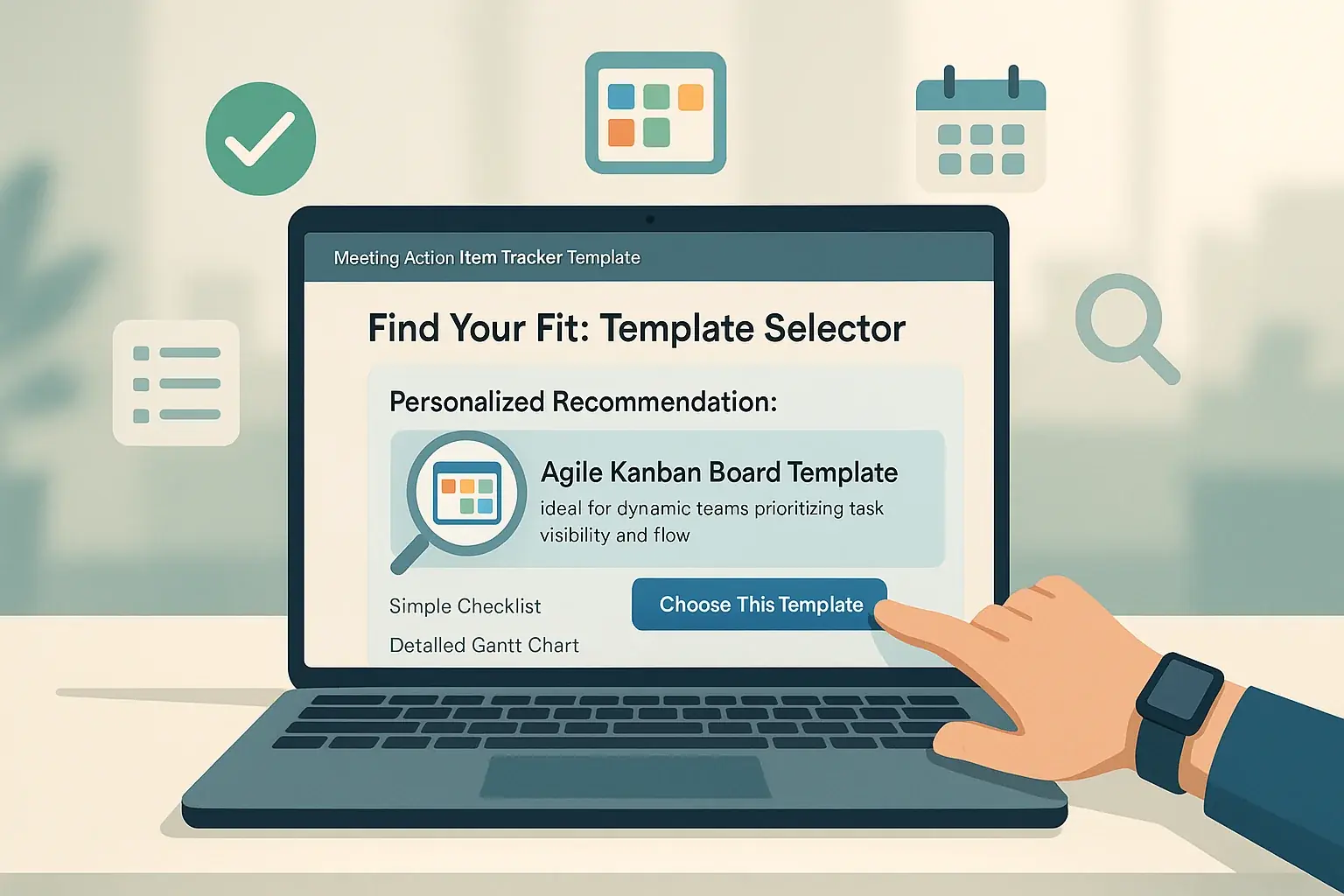
Which Action Item Tracker Fits Your Team?
Answer a few quick questions to find the best template or tool type for your hybrid meeting follow-ups.
Now that you've explored the common pitfalls, it's time to find a solution that endures. Our 'Meeting Action Item Tracker Template Selector' tool cuts through the noise. It helps you pinpoint the ideal tracking method for your team's unique needs. This selector delivers personalized recommendations. Your team gains a well-suited approach to managing action items with impact.
This isn't just about picking a template; it's about finding a system that genuinely boosts your team's accountability and ensures no task gets lost again. The tool's recommendations offer practical tips. These insights help you implement chosen methods for real results. Explore your results. Consider how these strategies will improve your team's workflow.
User-Sourced Fixes: How Hybrid Teams Actually Track Actions
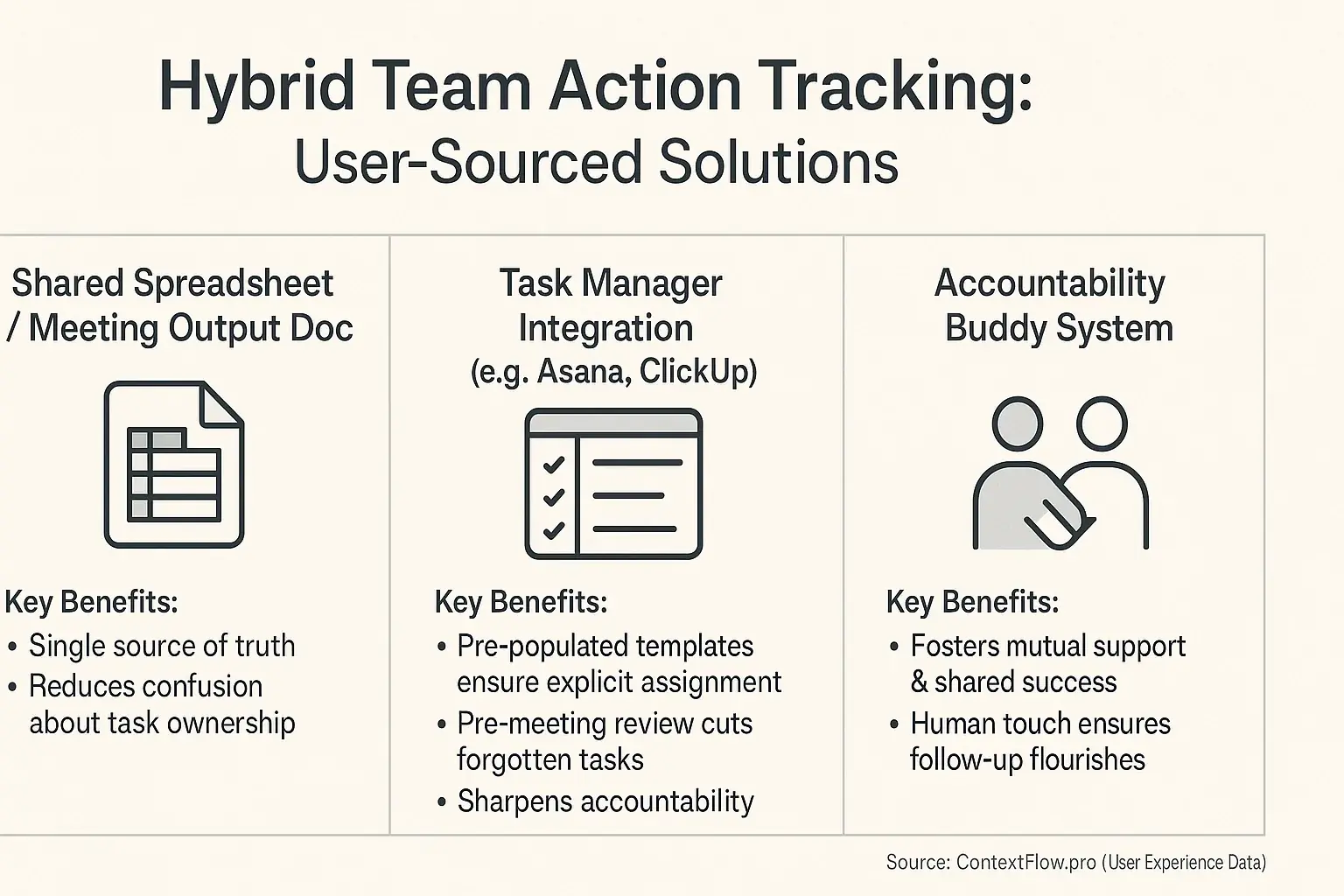
The good news? Hybrid teams innovate. They are not merely suffering. Our deep dive into user experiences revealed a treasure trove of practical strategies. These methods genuinely keep action items from disappearing. These are proven, real-world tactics, born from necessity.
Many teams swear by a "meeting output" document. This simple, shared spreadsheet or Notion page logs all action items. Tasks get assigned. Due dates are set. All in real-time. This practice creates a single source of truth. Everyone gains access. User reports confirm this clarity significantly reduces confusion about who does what.
For more complex projects, users often leverage dedicated task management tools. Think Asana or ClickUp. But there is a user-driven twist. Teams pre-populate meeting templates with action item fields. This simple step forces explicit assignment. It ensures tracking from the very start. Here is a kicker many users shared: a "pre-meeting action item" review. They scrutinize the previous meeting's tasks before the new one begins. This powerful ritual dramatically cuts down on forgotten tasks. Accountability sharpens.
Another user-developed gem? The "accountability buddy" system. Colleagues pair up. They gently remind each other about pending tasks. This approach fosters genuine mutual support. It cultivates a culture of shared success. Users emphasize it is less about policing. It is more about collective achievement. This human touch ensures follow-up flourishes.
Don't Let Actions Vanish: Your Path to Post-Meeting Clarity
The Action Item Black Hole is a real challenge. This problem, however, is not inevitable. Understanding common pitfalls moves you toward solutions. These pitfalls include unclear ownership, fragmented notes, and missing follow-up. Achieving post-meeting clarity is entirely possible with focused effort.
User-sourced strategies offer potent solutions for your hybrid meeting outcomes. Implementing one technique can improve your team's post-meeting productivity. Simple, consistent habits ensure task completion. This discipline guides great ideas and crucial tasks toward successful execution. Start small. Build these habits for lasting productivity gains and superior hybrid meeting results.

